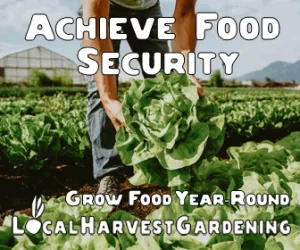Growing carrots requires a loose, fertile soil and consistent moisture. Sow seeds directly and thin seedlings to prevent crowding. Harvest when vibrant and firm. To grow carrots organically requires using no chemical pest control.
Choosing the Right Variety
Considering Climate and Soil Compatibility
Before sowing your carrot seeds, it’s imperative to select varieties that will thrive in your specific climate and soil conditions. If you have heavy clay soil, opt for shorter, more robust types like ‘Chantenay’ or ‘Oxheart’, which are also renowned for their sweetness. In contrast, sandy or loam soils are perfect for longer varieties such as ‘Nantes’ or ‘Imperator’, which are prized for their classic carrot shape and flavor. For gardeners dealing with cooler climates, ‘Danvers’ is an excellent choice, being notably cold-resistant and producing a hearty yield. Always look for varieties that have a reputation for being resistant to pests like carrot fly, to ensure a bountiful and healthy harvest.
Best Heirloom cultivars for harsh winter regions
- Paris Market: This variety is known for its ability to withstand colder temperatures, making it an ideal choice for regions with harsh winters.
- Oxheart: Another excellent heirloom variety that can tolerate cold weather and still produce sweet, flavorful carrots.
- Scarlet Nantes: This type of carrot has been around since the 19th century and has proven to be resilient in cold climates. It also boasts a classic carrot flavor.
- Cosmic Purple: A unique variety that not only adds color to your garden but also has strong resistance to cold temperatures.
- Atomic Red: This heirloom carrot has been grown for centuries and is known for its vibrant red color and ability to thrive in cooler climates. Overall, when selecting heirloom cultivars for mild or harsh winter regions,
- Dragon Purple: A purple-skinned carrot with a bright orange interior. This variety is cold-resistant and has a delicious, sweet flavor.
- Nelson: With its long growing season, this heirloom carrot is perfect for cooler climates. It produces large, flavorful carrots that can withstand the cold.
- Jaune Obtuse Du Doubs: This French heirloom variety is known for its ability to survive frosts and produce sweet, tender carrots even in cooler temperatures.
- Solar Yellow: This bright yellow carrot is another great cold-resistant variety that can add some color to your winter garden. It has a crisp texture and slightly sweet flavor.
- Little Finger: A miniature heirloom carrot with a deep orange color and excellent cold resistance. It’s perfect for snacking or adding to soups and stews.
- Bolero: This type of carrot is known for its ability to grow in colder temperatures and still maintain its crisp texture. It’s also resistant to diseases and pests, making it a reliable choice for any garden in a colder region.
For gardeners living in mild winter regions, heirloom varieties can be a great option for growing carrots. These varieties have been passed down from generation to generation and are known for their unique flavors, colors, and textures.
Some popular heirloom cultivars for mild winter regions include:
- Atomic Red: This variety produces bright red, tapered carrots with a mild and sweet flavor.
- Amarillo Yellow: As the name suggests, this variety produces vibrant yellow carrots that are slightly sweeter than traditional orange varieties.
- Lunar White: These creamy white carrots have a delicate flavor and are known for their tenderness. They can be a great addition to salads or roasted vegetable dishes.
- Cosmic Purple: These deep purple carrots are not only visually stunning but also have a sweet and earthy flavor. They’re also rich in antioxidants, making them a nutritious choice for your winter garden.
List cultivars for zones 9-6
- Danvers
- Chantenay
- Oxheart
- Nantes
- Imperator
Cultivars for zones 5-2
- Purple Haze
- Cosmic Purple
- Scarlet Nantes
- Paris Market
- Lunar White
Preparing Your Garden Bed for Carrots
Soil Preparation and Fertilization
Carrots prefer loose, well-draining soil that is free of rocks and other obstructions. Before planting your seeds, make sure to thoroughly remove any debris and break up any large cl
Preparing the Soil
Once you’ve chosen the right variety, it’s time to prepare your soil for sowing. Carrots prefer a loamy, well-drained soil that is free of rocks and debris. Begin by removing any weeds or large stones from
Soil Preparation
Before planting, it’s important to prepare the soil by loosening it to a depth of 12-15 inches. This will allow the carrots’ long taproots to grow freely. You can also add compost or well-decomposed manure to enrich the soil and provide necessary nutrients for your crops. Avoid using fresh manure, as it can lead to root deformities and poor growth.
Sowing Seeds
Carrot seeds are small, so it’s important to sow them thinly and evenly. If the seeds are too close together, they will need to be thinned out later on, which can disturb the delicate root systems of young plants. To sow your seeds, create a shallow trench about 1/4 inch deep and sprinkle the seeds along the trench. Cover with a thin layer of soil and water gently. Keep the soil consistently moist until the seedlings emerge.
Sowing the Seeds
Plant seeds directly in the garden, 1/4 inch deep and 2–3 inches apart.
After preparing the soil, it’s time to sow your carrot seeds. Using a rake or hoe, create a shallow trench about ¼ inch deep. Carefully sprinkle the seeds along the length of the trench, making sure to space them out evenly. Cover with a thin layer of soil and gently water in. Keep the soil consistently moist until the seedlings emerge.
Germination Process
Once sown, it’s crucial to maintain even soil moisture to ensure successful germination of carrot seeds, which can typically take between 1 to 3 weeks. During this period, avoid letting the soil dry out; a light mulch can help retain soil moisture. However, be careful not to overwater, as this can lead to seed rot. Consistency is key, so gentle, frequent watering works best until you see the first sprouts breaking through the soil surface.
Preparing Your Garden Bed for Carrots
Once your carrot seedlings reach about 2 inches in height, it’s time to thin them to prevent overcrowding. This step is vital for developing strong and healthy adult carrots. Carefully remove the smallest seedlings, leaving at least 1–2 inches of space between the remaining plants. This allows adequate room for the carrots to grow in size and reduces the competition for nutrients and water. Remember to thin gently to minimize disturbance to the roots of the plants you want to keep.
After thinning the seedlings, continue to water gently and consistently, ensuring that your carrots receive at least 1 inch of water per week. This is particularly crucial during dry spells, as carrots require steady moisture to develop properly. If rainfall is insufficient, supplemental watering will be necessary. Using a soaker hose or drip irrigation system can provide a steady supply of moisture without over-saturating the soil or causing soil erosion.
Fertilization and Weeding Carrots
Use a low nitrogen fertilizer to encourage root growth over foliage.
Carrots are heavy feeders, meaning they require a lot of nutrients to grow. It’s essential to fertilize your carrot plants with an all-purpose balanced fertilizer every 3-4 weeks. This will help promote healthy growth and produce bigger, tastier carrots. Be careful not to over-fertilize, as this can lead to excess foliage growth and smaller carrots.
Follow the recommended amount on the fertilizer packaging and always water after application to avoid burning the plants.
Additionally, regular weeding is necessary to prevent competition for nutrients and reduce the risk of pests and diseases. Be sure to remove any weeds that may be growing near your carrot plants, being careful not to disturb the roots. Mulching can also help suppress weed growth while also retaining moisture in the soil.
Organic Fertilization of Carrots
When opting for organic fertilization, it is beneficial to use compost or well-rotted manure in your carrot garden. These organic matter sources are rich in nutrients and can improve soil structure, encouraging healthy root development. Add a layer of compost around the base of the carrot plants, being careful not to let it touch the foliage, to prevent the risk of rotting. Organic alternatives such as fish emulsion or seaweed extracts are also excellent options that can provide your carrots with the necessary nutrients without the use of synthetic chemicals. Apply these natural fertilizers according to the product instructions and always ensure they’re well incorporated into the soil. Organic fertilization not only nourishes the plants but also promotes a thriving ecosystem within the garden.
Organic Pest and Disease Management for Carrots
When dealing with common garden pests such as carrot rust flies and aphids, introducing beneficial insects like ladybugs and lacewings can be an effective organic control method. These natural predators feed on the harmful pests, helping to maintain a healthy balance in your garden. In addition to biological measures, physical barriers such as floating row covers can also protect your carrot crops. Install these covers over your carrot beds to prevent pests from reaching the plants while still allowing sunlight and water to penetrate, thereby creating an environment less hospitable to pests and reducing the need for chemical interventions.
Rotating your carrot crops each season is a strategic approach to minimizing disease and pest buildup in the soil. Planting carrots in the same location year after year can lead to an accumulation of carrot-specific pathogens and pests, which can harm your yield. By changing the location where you plant your carrots each year, and growing them in a cycle with unrelated crops, you can disrupt the life cycle of these organisms. This practice not only helps to keep the soil healthy and balanced but also mitigates the risk of a pest or disease outbreak, ensuring a bountiful harvest.
Harvesting Carrots
When harvesting your carrots, gently pull them out of the ground by grasping the tops near the base of the plant. Be careful not to damage the roots or leave any behind in the soil. Rinse off any excess dirt, but do not scrub or wash the carrots too vigorously as this can remove their protective outer layer and reduce their shelf life.
Storage for Carrots
Remove the tops to prevent the roots from becoming woody.
Proper storage is crucial for maintaining the quality and freshness of your harvested carrots. Ideally, store them in a cool, dark place with high humidity to prevent them from drying out. One method is to wrap the unwashed carrots in damp paper towels and place them in a perforated plastic bag before storing them in the refrigerator’s vegetable drawer.
Another option is to store your carrots in a container filled with sand or sawdust, keeping them cool and moist while also preventing them from touching each other. This method mimics the conditions of being stored in the ground and can prolong their shelf life for up to several months.
Conclusion
Growing and harvesting your own carrots may require some extra effort and attention, but the rewards are well worth it. By following these tips, you can ensure a successful and bountiful harvest of fresh and flavorful carrots. Plus, the satisfaction of growing your own food is unbeatable! So why not give it a try and start growing your own carrots today? Happy gardening!


